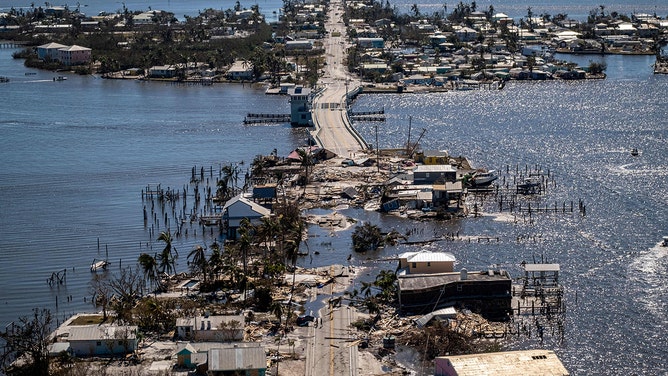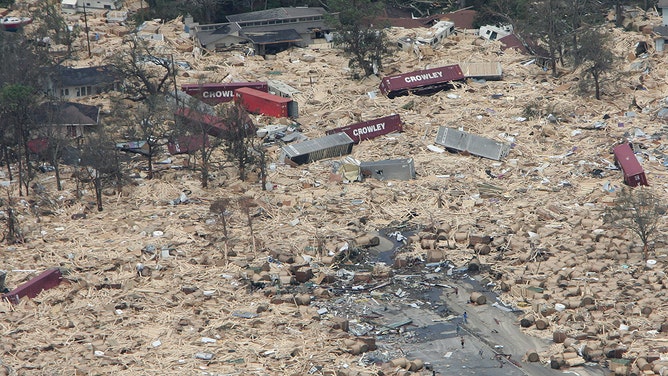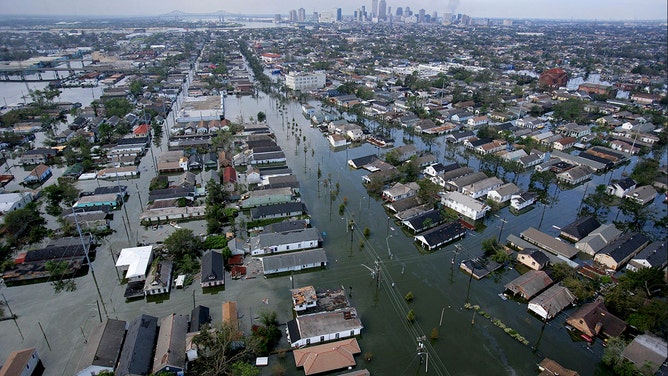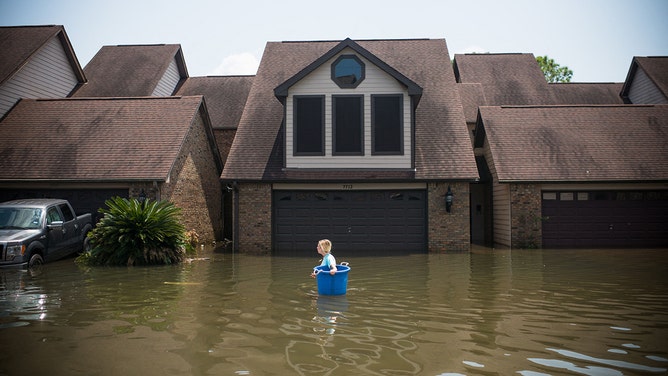Study: Atlantic hurricanes now stronger, faster than ever before as climate and oceans warm
The number of Atlantic tropical cyclones that intensify from a Category 1 hurricane or weaker, into a major hurricane within 36 hours has more than doubled in the modern era as compared to the historical era, according to the study's author.
Water from hurricanes, tropical storms kills more in US than wind
Water is the No. 1 killer during a hurricane or tropical storm that strikes the U.S. – comprising nearly 90% of all tropical cyclone deaths.
The U.S. Atlantic and Gulf coasts are experiencing increased damage from stronger and faster hurricanes, a new study suggests.
Over the past decade, more than 160 weather and climate disasters costing over a billion dollars have impacted the U.S., and 24 of them have been tropical cyclones, according to a study published Thursday by Andra J. Garner, an assistant professor at Rowan University in New Jersey.
Garner said her analysis from 1971 to 2020 shows that human-made greenhouse gas emissions and their ensuing warming effect on the planet and oceans have influenced the intensification rates of Atlantic tropical cyclones.
WHAT DOES IT MEAN WHEN A HURRICANE UNDERGOES 'RAPID INTENSIFICATION'?

An aerial picture taken on September 30, 2022, shows the only access to the Matlacha neighborhood destroyed in the aftermath of Hurricane Ian in Fort Myers, Florida.
(RICARDO ARDUENGO/AFP / Getty Images)
According to Garner, the number of tropical cyclones that intensify from a Category 1 hurricane or weaker, into a major hurricane within 36 hours has more than doubled in the modern era (2001–2020) as compared to the historical era (1971–1990).
In a modern era, the mean maximum intensification rates of tropical cyclones are up to 28.7% greater compared to the previous 20 years, as noted by Garner.
Most destructive hurricanes in US due to rapid intensification
In recent years, many of the most devastating hurricanes that have hit the U.S. have been known for their rapid intensification.
THE BEASTS OF THE ATLANTIC: 94 RETIRED HURRICANE OR TROPICAL STORM NAMES

A residental area is engulfed in shipping containers, RVs, and boats washed ashore 30 August 2005 in Gulfport, Mississippi following high winds and waves Hurricane Katrina.
(PAUL J. RICHARDS/AFP / Getty Images)
Hurricane Maria in 2017, for example, went from a tropical storm to a Category 5 hurricane on the Saffir-Simpson scale in just over 48 hours. It caused the highest death toll since 1980 and the fourth-highest economic cost in the last four decades.
The top five costliest U.S. weather and climate disasters in the past decade have been hurricanes Harvey (2017), Ian (2022), Sandy (2012), Ida (2021), and Irma (2017) – all also underwent rapid intensification, Garner said. Most became a major hurricane, as in Category 3 or higher, in under three days.
TOP 5 COSTLIEST HURRICANES IN US HISTORY

Flood waters from Hurricane Katrina cover streets on August 30, 2005, in New Orleans, Louisiana.
(POOL/AFP / Getty Images)
Garner said that it would have been statistically impossible to observe the number of tropical cyclones that intensified during the modern era, if rates of intensification had not changed from the historical era.
Bryan Norcross: ‘Clearly, it’s occurring’
FOX Weather hurricane specialist Bryan Norcross says there is no question that hurricanes are more likely to rapidly intensify when the ocean temperature is warmer, as it more often is in the modern climate.
While Norcross said he is reluctant to compare storms or strengthening rates from different eras to derive hard numbers, he offered this insight:
"From the 1970s until the mid-90s, it’s well-known that less of the sun’s energy reached the tropical Atlantic due to air pollution from Europe combined with volcanic eruptions," he said. "The result was fewer storms and fewer strong storms."
WHY DON'T HURRICANES STRIKE CALIFORNIA?

Jenna Fountain carries a bucket down Regency Drive to try to recover items from their flooded home in Port Arthur, Texas, September 1, 2017, following Hurricane Harvey.
(EMILY KASK/AFP / Getty Images)
When air-quality standards were enacted in Europe, Norcross said the air over the Atlantic cleared, which contributed to oceanic warming.
Increased levels of CO2 in the atmosphere have made the ocean warmer yet, Norcross adds. In addition, modern observing technology is more likely to detect super-strong winds.
"In my mind, these variables and more make the exact amount of increased rapid intensification fuzzy, but clearly, it’s occurring," he said.
